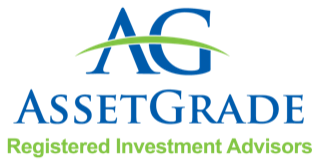
What the SECURE Act Means For Individuals and Small Business Owners
By: Susan Powers
The new Setting Every Community Up For Retirement Enhancement (SECURE) Act was just signed by President Trump on December 20,2019. For individuals and small business owners, there are several ways the SECURE Act may affect you. Highlighted below are a few of the ways the new legislation will impact IRA and employer plan withdrawal options and new rules for small businesses starting a retirement plan effective January 1, 2020.
IRA and Employer Plan Withdrawals
- Required Minimum Distributions (RMDs) - You can now delay past age 70 ½. If you turn 70 ½ after January 1, 2020, you now have until age 72 to begin taking RMDs from your IRA or employer sponsored plan. By pushing back the age, you have additional time to grow your savings before taking distributions and paying taxes.
- Stretch Provisions - A popular estate planning tool has been to designate a younger, non-spouse beneficiary for an IRA or employer plan. In this case, the beneficiary could, in most cases, stretch out the RMDs over his or her own longer life expectancy, essentially “stretching” out the tax benefits of the retirement account. With the new law, most non-spouse beneficiaries will now have to distribute their entire inherited retirement account within 10 years of the year of death of the owner. Similar changes apply where a trust has been named as a beneficiary. This is good time to review your beneficiary designations and make sure they align with your goals.
Small Business Owners Starting a Retirement Plan
- Extension of Deadline to Adopt a New Plan - In the past, most plans had to be established in writing by December 31st. Small businesses now have until the income tax return filing deadline, including extensions of time to file, to establish a new plan. This will allow much more time to fully explore your options, without the pressure to make a decision before year end.
- Small Business Owner Tax Credits – The small business tax credit, a less publicized provision, but equally important, increases the tax credit available to small businesses that start a new retirement plan for their employees. The SECURE Act increases the credit from $500/year up to $5,000/year for three years, meaning the maximum credit is now $15,000 over three years. The tax credit is in addition to the tax deductions for employer contributions made to the plan.
We will continue to provide more information regarding the provisions of the SECURE Act as we complete our analysis. Let’s talk to see how you may benefit from the new tax law.

